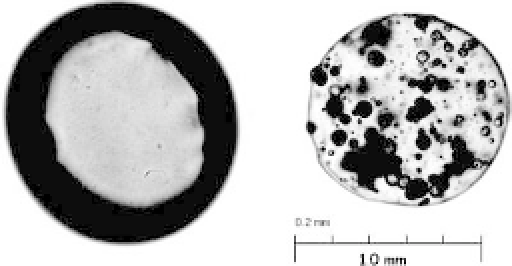Biomedical Engineering Reference
In-Depth Information
required functionality can be an easy solution. In this case, matrices
areengineeredintodifferentsegmentsorlayersbyclearboundaries
accordingtotheirrole.Forinstance,thesourcewillbeencapsulated
at the core and then coated with another layer having the activating
catalyst.Suchdesignallowsthegenerationofoxygeninacontrolled
manner during application, while the loss of the source will be min-
imized during production as the activating agent is not in contact
directly with the source. Materials chosen for each segment may be
of different types but must be able to attach together boundary to
boundary, while being ready to be grafted with the required func-
tionality.
A successful attempt has been demonstrated in mixing PLGA
microspheres encapsulated with H
2
O
2
into alginate beads, in which
the alginate was first grafted with catalase. Alginate is chosen as the
second coating layer as its backbones consist of a carboxylic group
that is suitable to be grafted with catalase, besides showing no toxic
effect, being biocompatible, and being well employed in encapsu-
lated bioreagents.
58
,
59
In addition, an alginate solution can be easily
formedintoahydrogelusingadivalentcationsuchasbarium(II)or
calcium (II) ions. PLGA microspheres, although from different kinds
of materials, were found to be evenly distributed within the algi-
natebead,asobservedclearlyfromtheimagetakenunderanoptical
microscope (Fig. 32.1).
Figure 32.1.
H
2
O
2
-encapsulated PLGA microspheres that are evenly dis-
tributed within an alginate matrix that has been grafted with catalase
to decompose the H
2
O
2
. Black spots in the right bead were the PLGA
microspheres, while the alginate hydrogel was transparent under the opti-
cal microscope. The left microbead is the control, produced using alginate
without the additionof PLGAmicrospheres.









Search WWH ::

Custom Search